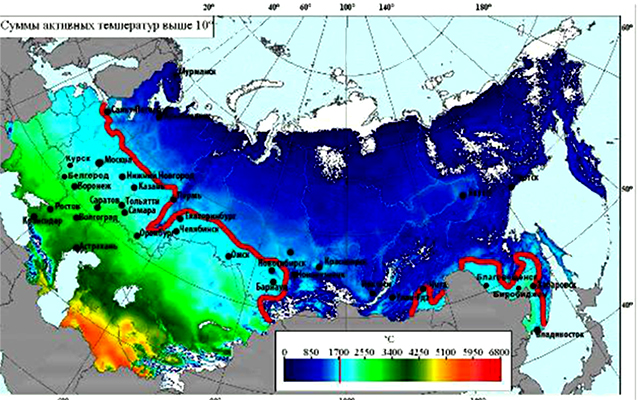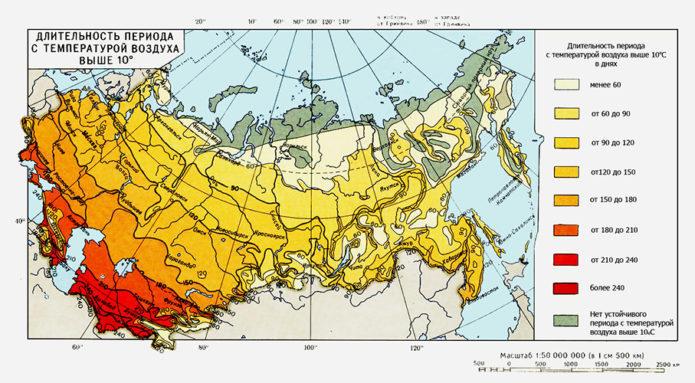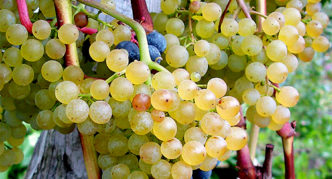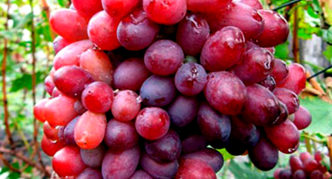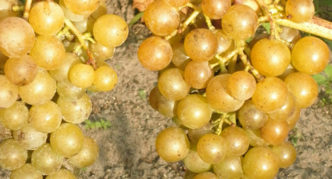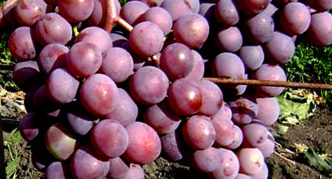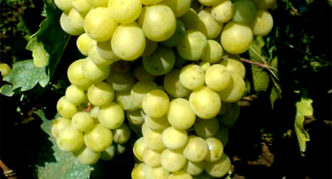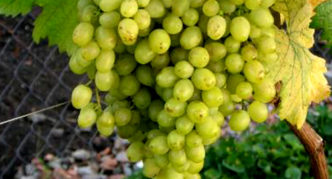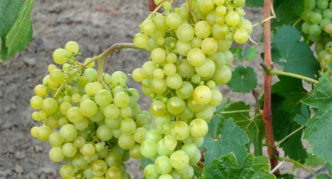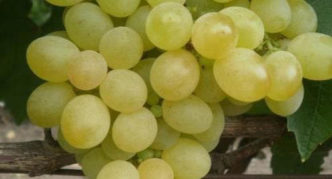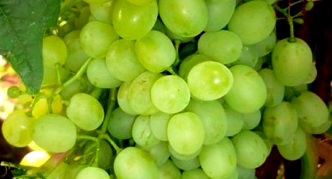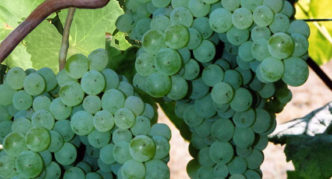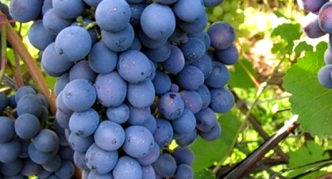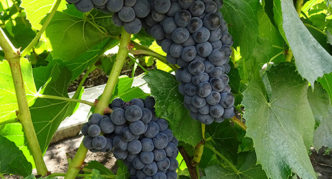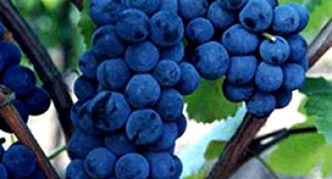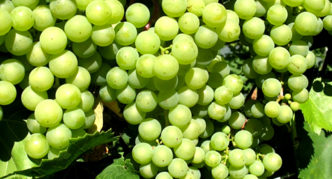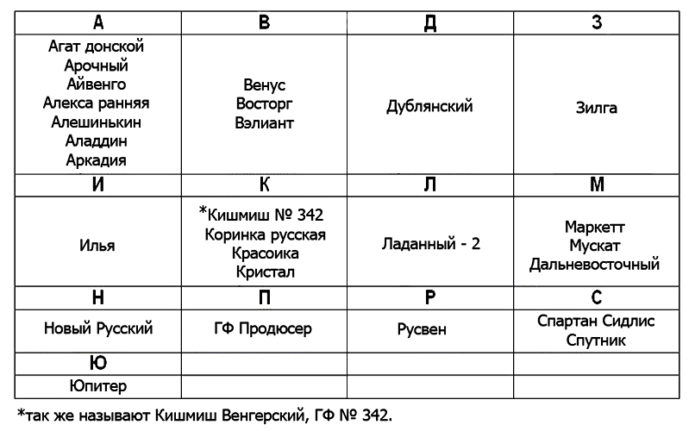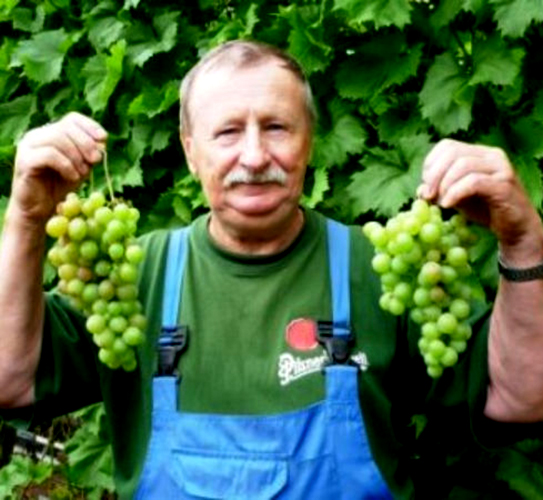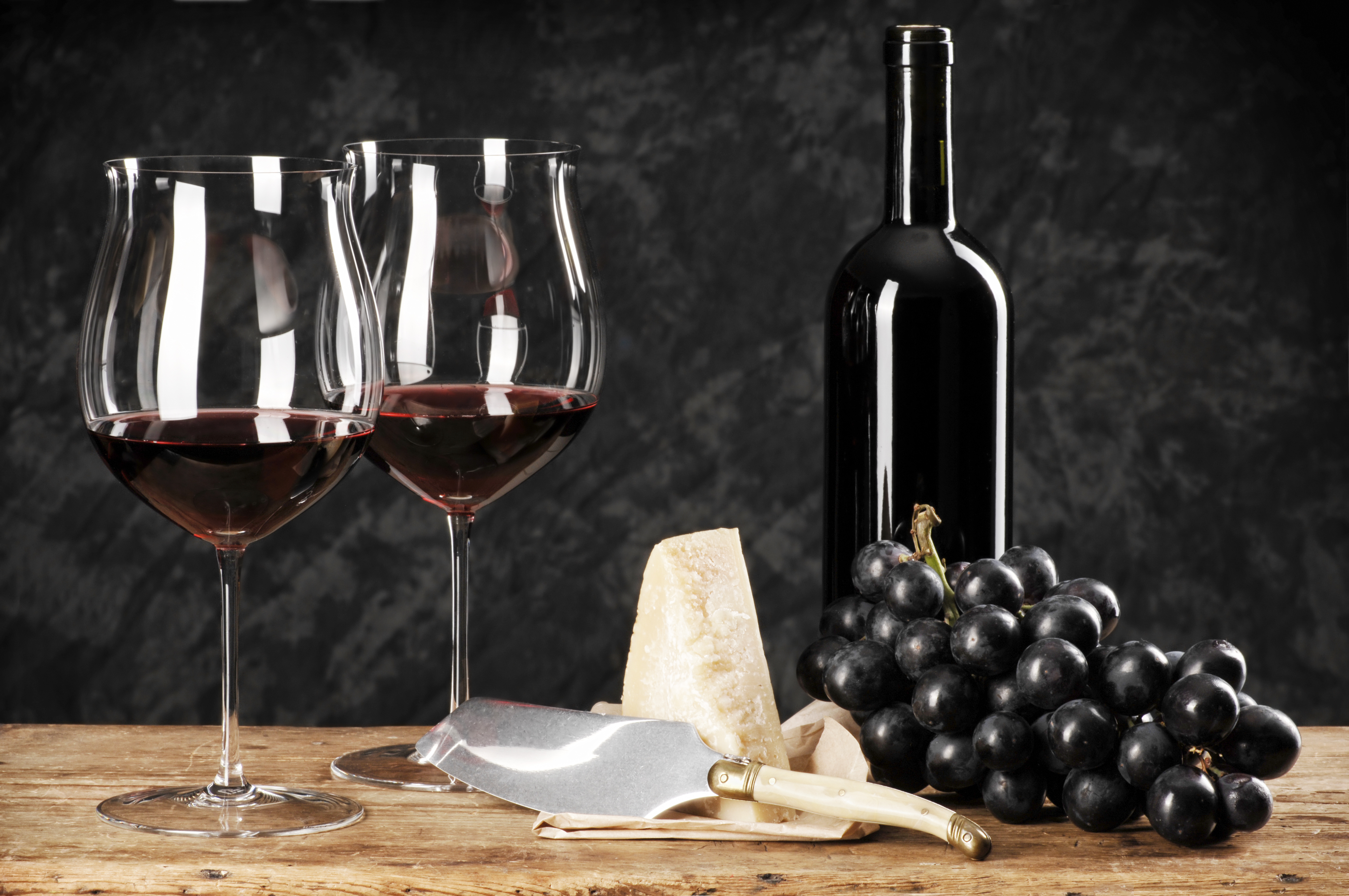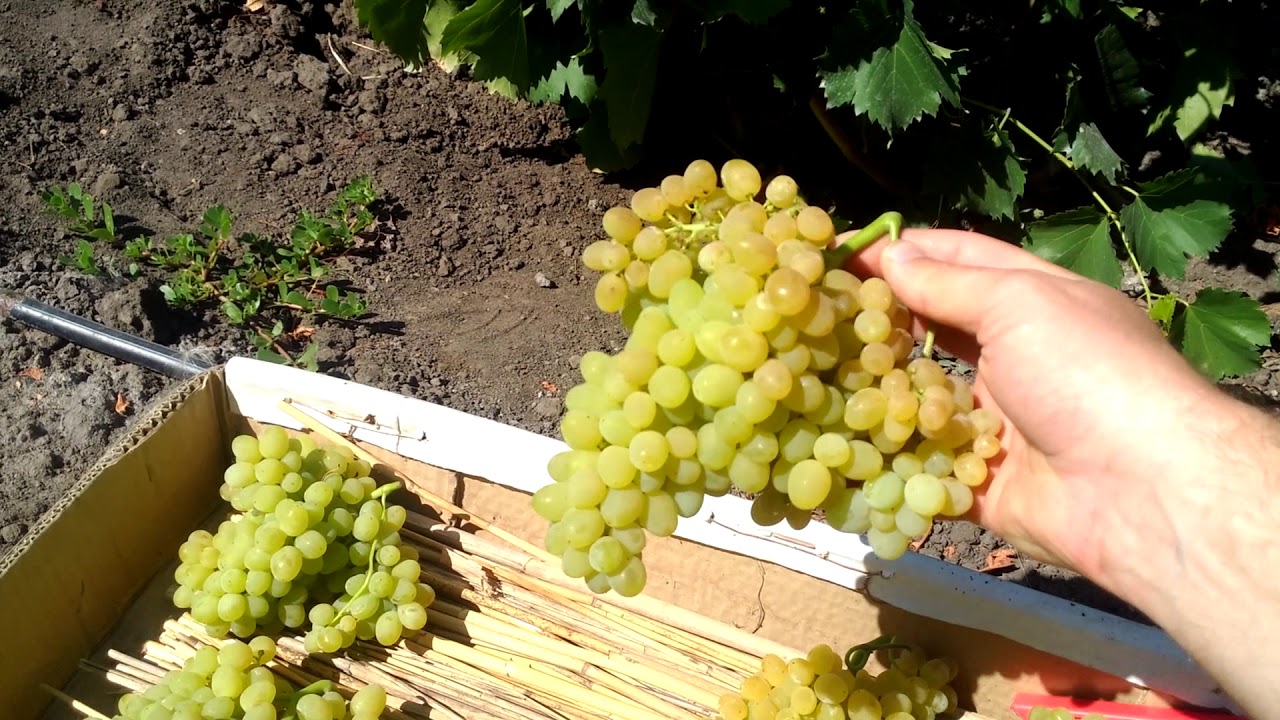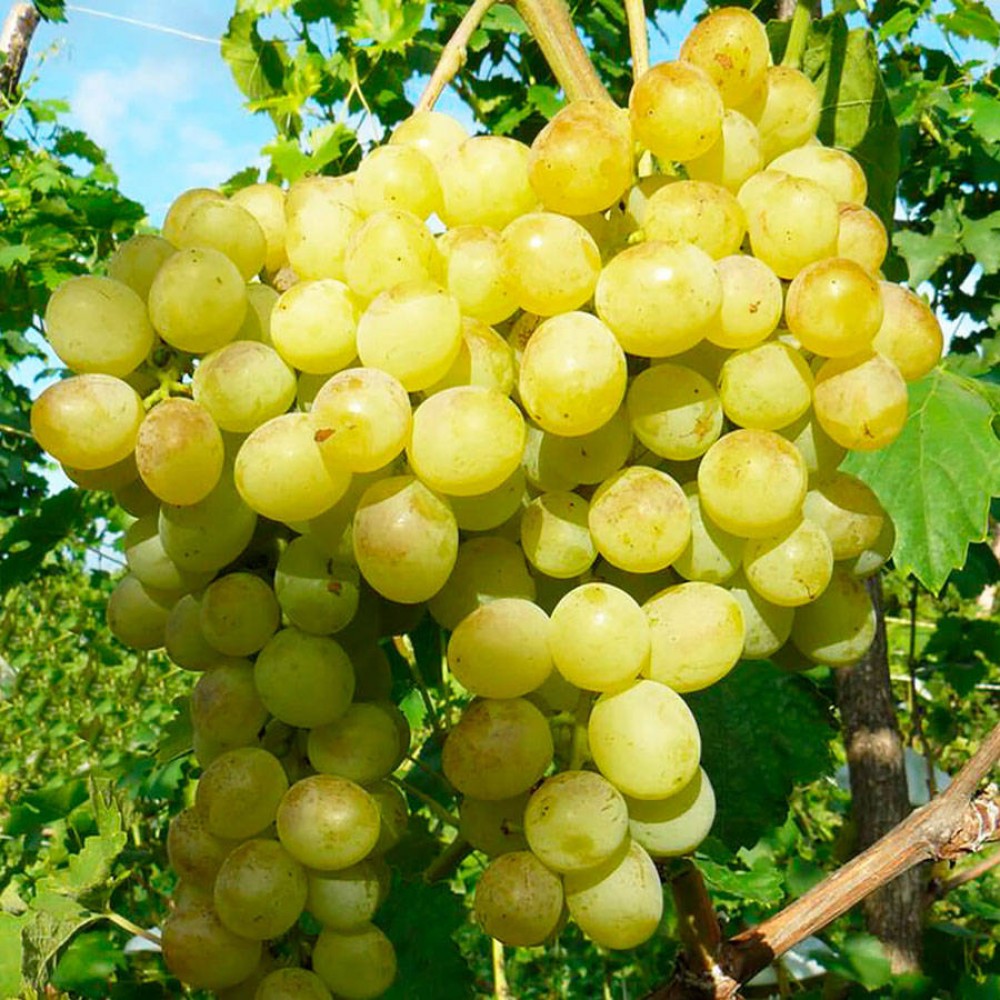In Central Russia and in the Moscow region, delicious table or technical grapes for making juice or wine have long ceased to be exotic. It is grown in greenhouses, greenhouses or open ground. Here are the grape varieties for open ground and the criteria by which they are chosen, will be discussed in this article.
Content
Needed - not needed
Using the example of the famous Isabella variety, we will analyze why this grape is not suitable for growing on a personal plot in the Moscow region. A variety of this plant is chosen according to characteristics that must correspond to the climatic conditions of the growing region.
The main characteristic when choosing a grape variety for the Moscow region is frost resistance. Isabella is fine with that. Its frost resistance is up to -40 ° С. Its other characteristics are also pleasing:
- suitable for fresh consumption and for making juices and homemade wine;
- self-pollinating - does not require the presence of another variety of grapes on the site, blooming at the same time;
- not very dense clusters of medium size, weighing 140 g;
- berries of pleasant taste with a pronounced strawberry aroma;
- increased resistance to fungal diseases;
- high humidity does not affect the growth of the bush and the setting of berries.
It would seem that everyone is good about Isabella, but ... For the ripening of the harvest, this grape needs 31,000 ° C in the sum of active temperatures (SAT).
The duration of the period when the air temperature does not fall below 10 ° C should be up to 180 days (6 months). Isabella grapes ripens only in mid-October - early November. In the Moscow region in the second half of October, weather conditions are unlikely to allow the harvest to ripen. The second most important characteristic by which a grape variety is chosen for cultivation in the Moscow region is the ripening period of the berries. The period from bud break to harvest should not exceed 120–140 days.
One more criterion for choosing litter you need to think about before buying seedlings - will the gardener have the opportunity to shelter adult grape bushes for the winter. This is a rather time consuming and costly process. Covering or non-covering way, you can grow some kind of grape does not always depend on its frost resistance. The peculiarities of the root system and the structure of wood were taken into account by breeders when breeding varieties that do not require warming for the winter in Central Russia.
For example, Charlie (Anthracite) grape bushes can withstand temperatures of -25 ° C without shelter. Of course, this indicator indicates that the variety is a covering, but shelter for the winter in most regions of the vine needs the lightest possible:https://flowers.bigbadmole.com/en/yagody/vinograd/vinograd-charli-opisanie-sorta-foto.html
Some of the hardy grape varieties - table
| Variety name | Term maturation (days) | Winter hardiness (° C) | Berry color | The weight | Features: | |
| bunches (d) | berries (d) | |||||
| Russian corinka | 95–105 | — 26 | golden with tan | 102 | 1,5–2 | lack of seeds; sugar content 22.0%; acidity 7.0 g / l. |
| New Russian | 95–105 | — 34 | pink | 250 — 350 | 3,5 — 5 | disease resistance above average; sugar content 20–22%; acidity 5.8 g / l. |
| Far East Muscat | 110–115 | — 30 | amber white | 100 | 2–3 | bright taste of nutmeg; sugar content 22-24%; acidity 6–7.5 g / l. |
| Rusven | 110–115 | — 27 | light pink | 350–550 | 5 — 6 | taste - sage nutmeg; sugar content 18-22%; acidity 7-9 g / l. |
| Cubattik | 105–115 | –27° | dark red-violet | 705 | 4–5 | diseases are affected in an average degree; sugar content up to 17%; acidity 5 g / l. |
Frost-resistant grape varieties in the photo
- Bunches of grapes Korinka Russian
- Bunch of Kubattik grapes
- Bunches of grapes of the Muscat Far East variety
- Bunches of grapes varieties New Russian
- Bunch of Rusven grapes
Some of the early grape varieties - table
| Variety name | Term maturation (days) | Winter hardiness (° C) | Berry color | The weight | Yield (t / ha) | Features: | |
| bunches (d) | berries (d) | ||||||
| Aleshenkin's gift * | 110–115 | up to -25 | amber with white bloom | 552 | 4–5 | 8,5 | increased resistance to disease; sugar content 16.0%; acidity 8.7 g / l; requires shelter for the winter. |
| Long awaited | 105–110 | -23 | yellow | 780 | To 10 | 20,2 | disease resistance is average; sugars 15.4%; acids 5.8 g / l; requires shelter for the winter. |
| Pearl Saba | 110–115 | -26 | golden yellow | 100–200 | 1,7 | 6,0- 12,0 | poor resistance to disease; nutmeg aroma; sugars 14-18%; acids 6.5–8.5 g / l; does not require shelter for the winter. |
| Kishmish Cocktail ** | 110–115 | -25 | amber | 353 | 2,5–3,5 | 32,2 | disease resistance is average; sugars 16.2%; acids 7.0 g / l; requires shelter for the winter. |
| Moscow sustainable | 130–135 *** | -30 | light green | 97 | from a bush 3.5 kg | nutmeg aroma with a pineapple flavor; disease incidence 40%; spider mite damage 60%; sugar content 18.9%; acidity 9.0 g / l; does not require shelter for the winter. | |
* Often referred to simply as Alyoshenkin.
** Kishmish - there are no seeds in the berries (their rudiments can be found only in certain berries).
*** Mid-early ripening period.
Anyuta grapes have a delicious deep pink color and large clusters. Experts note the high product and transportability of the variety, and consumers - the unique taste:https://flowers.bigbadmole.com/en/yagody/vinograd/vinograd-anyuta-opisanie-sorta-foto-otzyvy.html
Early grape varieties in the photo
- A bunch of grapes varieties Aleshenkin Dar
- A bunch of grapes of the Pearl Saba variety
- Bunch of cocktail grapes
- A bunch of grapes varieties Moscow resistant
- A bunch of grapes of the Long-awaited variety
Some of the uncovered grape varieties - table
| Variety name | Term maturation (days) | Winter hardiness (° C) | Berry color | The weight | Features: | |
| bunches (d) | berries (d) | |||||
| Donskoy agate | 116–120 | — 26 | dark blue | 400–500 | 4–5 | high resistance to fungal diseases; sugar content 13-15%; acidity 6–7 g / l. |
| Sukrib | 95–105 | — 30 | white | 150–190 | 3,5–4,0 | high resistance to fungal diseases; weak nutmeg aroma; sugar content 16-19%, acidity 5-6 g / l. |
| Zilga | 105–110 | — 29 | 300–500 | 3–4 | light strawberry aroma; high resistance to fungal diseases; sugar content 20–23%; acidity 6–7 g / l. | |
| Spartan Seedlis | — 31 | 200–400 | 2,5–3 | with a pineapple flavor; good resistance to fungal diseases; sugar content 18-22%; acidity 4.5–5 g / l. | ||
| Valiant | 130 — 138 | — 40 | the black | 100 | 1,5–2,5 | strawberry flavor; resistant to disease; sugar content 19–20%; acidity 5-6 g / l. |
Non-covering grape varieties in the photo
- Bunch of Spartan Seedlis grapes
- Bunch of Agat Donskoy grapes
- A bunch of Valiant grapes
- Bunch of Zilga grapes
- A bunch of Sukrib grapes
The Zilga grape, universal for its purpose, ripens in 100-110 days after the leaves bloom on the vines. This form of grapes is resistant to cold temperatures down to -25 ºС, infection with real and downy mildew and gray rot:https://flowers.bigbadmole.com/en/yagody/vinograd/vinograd-zilga-opisanie-sorta-foto-otzyivyi.html
Agrotechnics of grapes in the Moscow region
Alexander Ivanovich Sopin is a former physicist who was engaged in laser technology. Now he is retired and has become one of the best winegrowers in the Moscow region. Aleksandr Ivanovich lectures at the Moscow Institute of Natural Sciences and writes articles about grapes. He grows and tests more than 60 varieties of grapes on his personal plot in the Northern Moscow Region. A. Sopin's publications on grape cultivation convey his personal experience gained over years of practice.
According to Alexander Ivanovich, the most important thing in caring for grapes is the fight against diseases. He spends 4 sprays per season:
- When opening bushes or before budding on non-covering varieties with 3% solution of ferrous sulfate.
- In the phase of 3-5 leaves on fruiting vines with Topaz.
- After flowering with Ridomil Gold.
- Three weeks before harvest with Horus.
If an outbreak of the disease occurs during a period when the berries have already begun to stain, then the treatment is carried out with a 10% solution of baking soda or a pale pink solution of potassium permanganate (potassium permanganate).
From spring to July 15-20, once a week, Sopin carries out root dressing - 5 liters of nitrogen fertilizer solution for each bush, both mineral and organic. From the second half of July until the beginning of the autumn yellowing of the leaves, it feeds only with potassium-phosphorus fertilizers.
Focusing on the characteristics of grape varieties that are successfully grown in the Moscow region by experienced winegrowers, a person who decides to plant this plant for the first time on his personal plot will not be mistaken with the choice of a variety and will be able to grow berries that are not inferior in taste to those brought from the south.
